Flavor Exploration: Spices
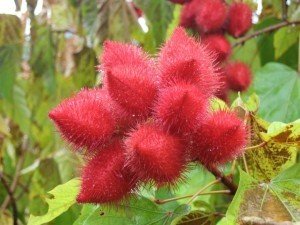
Today is the day.The last post in the 10-part flavor series is finally here! We've had such fun reviewing and exploring healthful ways to boost flavor so that your clients can Enjoy the Taste of Eating Right. So what's the grand finale? Well, it's one of the most healthful ways to give food a very serious kick of flavor… with spices!
But before we get to the nitty-gritty, let's take a minute to review the other installments in this Flavor Exploration series. Are there any that you want to revisit? Which was your favorite?
Of course, we've also got a great handout to help your clients take their flavor explorations to the next level. It's the grand finale to this final post. Today's Featured Flavor: SpicesSo. Let's talk about spices.Spices are defined as "aromatic or pungent vegetable substances used to flavor food." There are a whole bunch of different spices out there, and some of the most common include black pepper, cayenne pepper, cinnamon, cumin, nutmeg, and paprika. Let's get to know them a little better, shall we?Annato, pictured above, adds a beautiful yellow blush color to rice. We often use that in arroz con pollo or chicken with rice.
Today's Featured Flavor: SpicesSo. Let's talk about spices.Spices are defined as "aromatic or pungent vegetable substances used to flavor food." There are a whole bunch of different spices out there, and some of the most common include black pepper, cayenne pepper, cinnamon, cumin, nutmeg, and paprika. Let's get to know them a little better, shall we?Annato, pictured above, adds a beautiful yellow blush color to rice. We often use that in arroz con pollo or chicken with rice.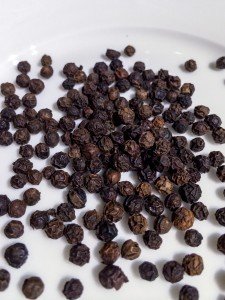 Black Pepper adds an aromatic heat to many foods. It boosts the flavor of everything from potatoes to fish to fresh-sliced tomatoes and salads. It's more pungent when freshly ground, though pre-ground black pepper still has some kick. For a real treat, press your peppercorns with the bottom of a skillet and sprinkle over tuna or potatoes before baking them in the oven.Cayenne pepper has a rich aroma and spicy-hot taste. The powder that we are familiar with comes from dried and ground cayenne peppers. It's especially great in rice dishes, beans, enchiladas, daals, etc. Use it sparingly because you can always add more as you go.
Black Pepper adds an aromatic heat to many foods. It boosts the flavor of everything from potatoes to fish to fresh-sliced tomatoes and salads. It's more pungent when freshly ground, though pre-ground black pepper still has some kick. For a real treat, press your peppercorns with the bottom of a skillet and sprinkle over tuna or potatoes before baking them in the oven.Cayenne pepper has a rich aroma and spicy-hot taste. The powder that we are familiar with comes from dried and ground cayenne peppers. It's especially great in rice dishes, beans, enchiladas, daals, etc. Use it sparingly because you can always add more as you go.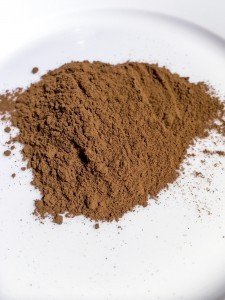 Cinnamon imparts a sweet taste without added sugar. There's a bit of a spicy kick to it too, though that spice level can vary widely among different varieties of cinnamon. Try it in oatmeal or sprinkled over apple slices. A whole cinnamon stick makes a wonderful addition to a mug of hot tea as well. You can even sprinkle on pear slices and bake in the oven for a wonderful fruit cookie.
Cinnamon imparts a sweet taste without added sugar. There's a bit of a spicy kick to it too, though that spice level can vary widely among different varieties of cinnamon. Try it in oatmeal or sprinkled over apple slices. A whole cinnamon stick makes a wonderful addition to a mug of hot tea as well. You can even sprinkle on pear slices and bake in the oven for a wonderful fruit cookie.
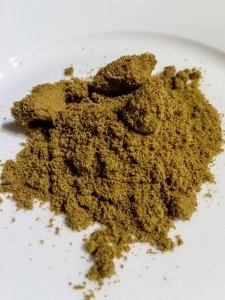 Cumin has an earthy flavor that is delicious when added to beans and chili. It is also one of the most important seasonings for hummus. Try roasting it in a skillet before adding to your next batch of chili for a wonderful, roasted flavor treat.
Cumin has an earthy flavor that is delicious when added to beans and chili. It is also one of the most important seasonings for hummus. Try roasting it in a skillet before adding to your next batch of chili for a wonderful, roasted flavor treat.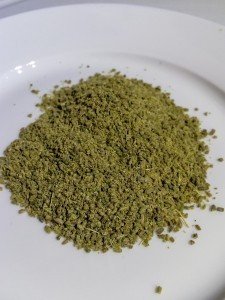 Fennel seeds add a delicious anise flavor to marinara sauces. Here we have ground them in a coffee grinder that we keep just for spices. Add ground fennel instead of meat or sausage to your next batch of spaghetti sauce.Nutmeg is the seed of the nutmeg tree. It offers a sweet, delicate flavor with just a hint of nuttiness. Try grating a little bit atop a squash soup, or stir some into your next batch of banana smoothie. It can be used in both savory and sweet applications.
Fennel seeds add a delicious anise flavor to marinara sauces. Here we have ground them in a coffee grinder that we keep just for spices. Add ground fennel instead of meat or sausage to your next batch of spaghetti sauce.Nutmeg is the seed of the nutmeg tree. It offers a sweet, delicate flavor with just a hint of nuttiness. Try grating a little bit atop a squash soup, or stir some into your next batch of banana smoothie. It can be used in both savory and sweet applications.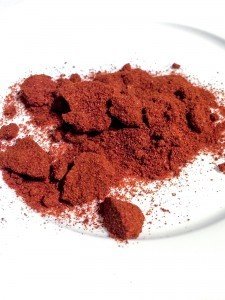 Paprika is a bright colorful spice with a mild flavor. It's adds color and flavor to white poultry, potatoes, and grilled fish. This Hungarian paprika is especially colorful and aromatic.Spices and Your Health:Now that we've had an introduction to basic spices, it's time to talk about why they make good additions to a healthful diet. Like with herbs, one of the main health benefits of spices is in terms of the other flavor-boosters that they can replace. Spices are calorie- and cholesterol-free foods. They don’t have any sodium, saturated fat, trans fat, or added sugars. Yet spices add serious flavor to any dish they touch, which makes them perfect replacements for less healthful flavoring agents like soy sauce and butter.Many spices have specific health benefits too. Black pepper, for example, has a whole host of health benefits. According to the paper, Black Pepper and Health Claims: a Comprehensive Treatise, "Black pepper (Piper Nigrum L.) is an important healthy food owing to its antioxidant, antimicrobial potential and gastro-protective modules."Capsaicin, the element that gives cayenne pepper its heat, is also great for your health. Capsaicin does a lot to reduce inflammation by fighting substance P, a neuropeptide that has been linked to inflammatory processes. It also helps clear mucus during bouts of congestion.Cinnamon positively rocks the health scene, with "anti-inflammatory, antimicrobial, antioxidant, antitumor, cardiovascular, cholesterol-lowering, and immunomodulatory effects," according to the paper Cinnamon and Health. Plus, Diabetics Care asserts that cinnamon may help improve your blood glucose and blood lipid levels. Further research is needed, but the initial findings are promising.Cumin, you may be surprised to learn, is actually a decent source of iron, a mineral that is key to circulatory health and energy production.Nutmeg can't be left out of the mix either. It contains antioxidants, which protect your cells from free radical damage.Paprika has a solid amount of vitamin B6, which is a coenzyme that is key to the function of many other enzymes. Some studies have indicated that paprika can remove homocysteine from the bloodstream, which could have a positive impact on heart health.Spices as Flavor Boosters:Spices are amazing flavor boosters, offering that je ne sais quoi that gives a dish depth and complexity. Since each spice is so very different (you certainly can't substitute cumin for cinnamon, for example) we think it's best to let each spice speak for itself. So check out our favorite recipes that feature these wonderful spices, then make a new dish tonight!
Paprika is a bright colorful spice with a mild flavor. It's adds color and flavor to white poultry, potatoes, and grilled fish. This Hungarian paprika is especially colorful and aromatic.Spices and Your Health:Now that we've had an introduction to basic spices, it's time to talk about why they make good additions to a healthful diet. Like with herbs, one of the main health benefits of spices is in terms of the other flavor-boosters that they can replace. Spices are calorie- and cholesterol-free foods. They don’t have any sodium, saturated fat, trans fat, or added sugars. Yet spices add serious flavor to any dish they touch, which makes them perfect replacements for less healthful flavoring agents like soy sauce and butter.Many spices have specific health benefits too. Black pepper, for example, has a whole host of health benefits. According to the paper, Black Pepper and Health Claims: a Comprehensive Treatise, "Black pepper (Piper Nigrum L.) is an important healthy food owing to its antioxidant, antimicrobial potential and gastro-protective modules."Capsaicin, the element that gives cayenne pepper its heat, is also great for your health. Capsaicin does a lot to reduce inflammation by fighting substance P, a neuropeptide that has been linked to inflammatory processes. It also helps clear mucus during bouts of congestion.Cinnamon positively rocks the health scene, with "anti-inflammatory, antimicrobial, antioxidant, antitumor, cardiovascular, cholesterol-lowering, and immunomodulatory effects," according to the paper Cinnamon and Health. Plus, Diabetics Care asserts that cinnamon may help improve your blood glucose and blood lipid levels. Further research is needed, but the initial findings are promising.Cumin, you may be surprised to learn, is actually a decent source of iron, a mineral that is key to circulatory health and energy production.Nutmeg can't be left out of the mix either. It contains antioxidants, which protect your cells from free radical damage.Paprika has a solid amount of vitamin B6, which is a coenzyme that is key to the function of many other enzymes. Some studies have indicated that paprika can remove homocysteine from the bloodstream, which could have a positive impact on heart health.Spices as Flavor Boosters:Spices are amazing flavor boosters, offering that je ne sais quoi that gives a dish depth and complexity. Since each spice is so very different (you certainly can't substitute cumin for cinnamon, for example) we think it's best to let each spice speak for itself. So check out our favorite recipes that feature these wonderful spices, then make a new dish tonight!
- Angel Hair Pasta with Fresh Roasted Marinara Sauce
- Apple Cinnamon Muffins
- Baked Banana Salsa
- Baked Parmesan Chicken
- Baked Potato Soup
- Broccoli Potato Soup
- Brown Rice and Kale Pilaf
- Cauliflower Crunch
- Chicken Pepper Rice Pot
- French Lentil Stew
- Garden Vegetable Pasta
- Grilled Red Potatoes
- Hummus
- Lean Turkey Chili
- Lemon Pepper Brown Rice
- Lentil Salad
- Mild Salsa
- Orange Spice Cake
- Oven-Fried Catfish
- Red Beans and Rice, Cajun Style
- Roasted Salmon Dinner
- Sangria Spritzer
- Sophisticated Poached Pears
- Spiced Apple Tea
- Spiced Cranberries
- Sweet Potato Casserole
- Waldorf Salad
- Whole Grain Pancakes
- Zucchini Muffins
Looking for more? There's tons in our store! The most popular and top-selling nutrition education materials include...
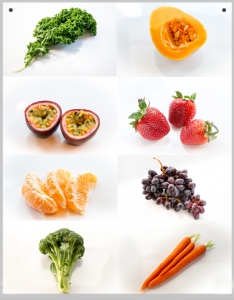

 And here is the grand finale! Help your clients take their spice explorations to the next level with the Zucchini Muffin Cooking Guide.
And here is the grand finale! Help your clients take their spice explorations to the next level with the Zucchini Muffin Cooking Guide.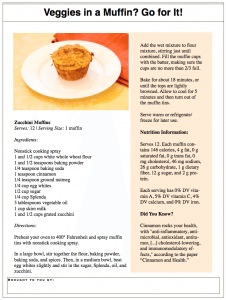 Download it today!
Download it today!


